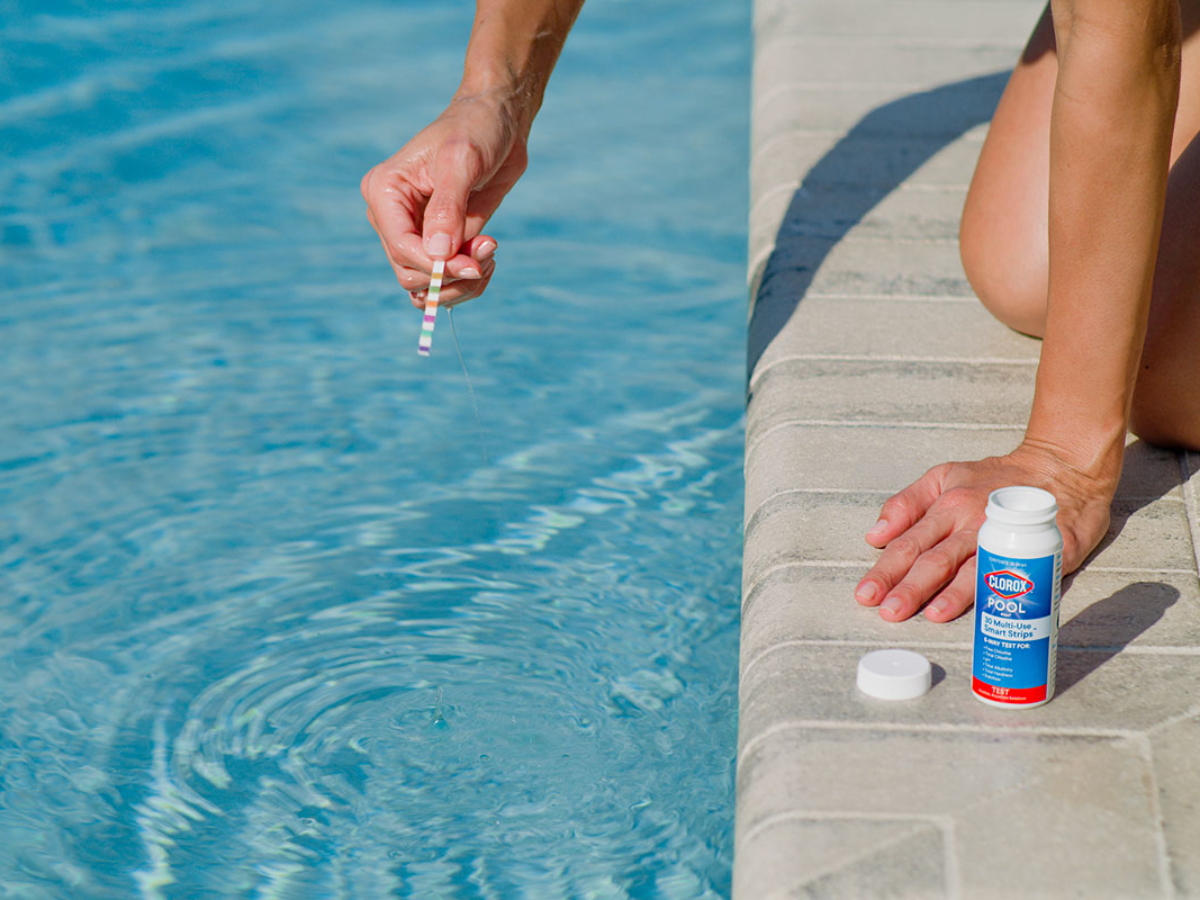
Water analysis tools are one of the essential pool accessories. Indeed, water analysis is an essential preliminary step for any treatment. Only a good knowledge of the water parameters in your pool will allow you to carry out an effective treatment and obtain clear and pleasant water for swimmers. Remember that it is necessary to test the water in your pond once or twice a week.
Manual Tests
Some kits allow you to test your pool water straightforwardly by taking a little water from your pool and putting it in contact with different reagents.
Test Strips
The strips are the easiest and most popular method to test your swimming pool water. These are paper strips sold in a bottle, and they are impregnated with one or more reactive products whose color will change after coming into contact with the water in the pool. There are many types of strips that allow different parameters to be tested: Rate of chlorine, bromine, stabilizer, alkalinity, water hardness, etc. The majority of strips allow testing of several parameters at once, for example, Rate of chlorine, alkalinity, and pH.
The use of the strips is straightforward: all you have to do is take a little water from the basin and immerse the strip in it while it is soaked in water. Once the strip has been impregnated, it must be removed and wait for about 15 seconds, and the reagents or spa chemicals will then change color. To read the results, there are two possibilities:
- By comparing the colors obtained with a table which is usually found on the label of the bottle.
- Using an electronic reader in which the strip is inserted will give the results of the test on a digital screen.
Electronic Testers
Different types of devices use electronics to measure specific parameters of your pond water:
The Electronic Ph Tester, Or Ph Meter
This type of device is equipped with an electrode tip and a digital screen. Immerse the electrode to see the pH of the water appear on the digital screen. These devices are precise and unparalleled in ease of use.
Note that other devices work on the same principle as the pH meter and allow specific measurements to be carried out such as the salt rate (for users of a salt chlorinator) or the Redox (which allows to ” assess the level of chlorine or bromine).




